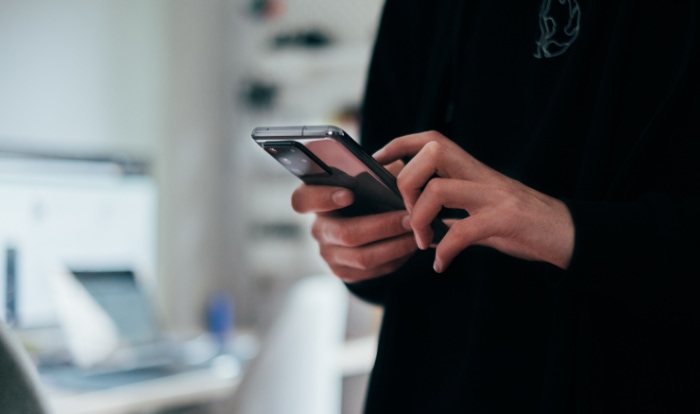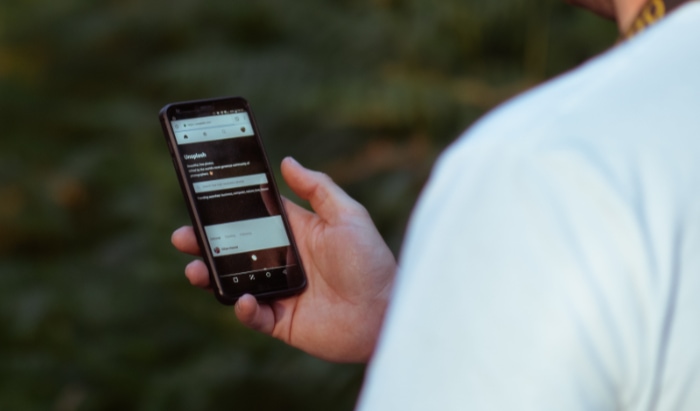The 2GB Question: Is It Enough Data for One Day?

Smartphones, tablets, and laptops have become central to our lives, whether it’s for work, education, or leisure. These devices, however, require data – the fuel that powers our emails, social media interactions, video streaming, and so much more. But how much data do we really need in a day? And specifically, is 2GB of data enough?
As our online activities continue to increase, understanding our data usage and its impact on our daily routines becomes essential. The question “Is 2GB of data enough for a day?” may sound simple, but the answer is a bit more complex.
It depends on various factors, including the type of activities you engage in, the quality of content you consume, and even the specific apps and platforms you use.
Understanding Data Usage
Data usage refers to the amount of data you use whenever you’re online. Whether you’re browsing a webpage, posting on social media, streaming a movie, or even sending an email, you’re consuming data.
The rate at which you consume data can vary greatly depending on the type of activity and the quality at which you’re viewing or listening to content.
Factors Influencing Data Usage
Several factors can influence your data usage. The first is the type of activity. For instance, streaming a high-definition video consumes more data than sending an email or browsing a text-based website. The second factor is the duration of the activity.
Watching a two-hour movie uses more data than a five-minute video clip. Lastly, the settings on your device or within specific apps can also affect data usage. For example, some apps allow you to choose the quality of video or audio, which directly impacts how much data you use.
Activity-Based Data Consumption
Different online activities consume data at varying rates. Here’s a general overview:
Emails and Web Browsing: These activities consume a relatively small amount of data. Most emails without attachments require only a few kilobytes (KB) of data. Regular web browsing also tends to be light on data usage, although websites with heavy multimedia elements will use more.
Social Media: Platforms like Facebook, Instagram, and Twitter can consume a moderate amount of data, especially if you frequently view or post photos and videos.
Video Streaming: Services like Netflix and YouTube are heavy data users, particularly if you’re streaming in high definition or 4K quality.
Music Streaming: Platforms like Spotify and Apple Music also consume data, but generally less than video streaming services.
Online Gaming: Online games can vary greatly in their data usage, depending on factors like the game’s complexity, update frequency, and the amount of time spent playing.
How Much Data Do Common Online Activities Use?

Now that we have a foundational understanding of data usage, let’s examine how much data common online activities actually consume.
Emails and Web Browsing: Understanding Data Consumption
Regular email checking and web browsing are considered light data activities. An average email without attachments uses approximately a few KB of data. When attachments, particularly high-resolution images or documents, are included, this can increase to about 300KB or more per email.
On average, general web browsing uses around 60MB per hour. However, this can vary depending on the nature of the websites. Sites with heavy multimedia elements or interactive features can consume more data.
Social Media: The Impact on Data Usage
Social media platforms can consume a significant amount of data, primarily due to the high volume of images, videos, and other dynamic content. On average, browsing Facebook for an hour can consume about 90MB of data.
Instagram, being more image and video-heavy, can use around 120MB per hour. Twitter, with a mix of text, images, and videos, can use approximately 45MB per hour.
Video Streaming: The Data Intensive Activity
Video streaming platforms like Netflix and YouTube are among the heaviest data consumers. Streaming a standard-definition (SD) video on Netflix uses about 1GB of data per hour, while high-definition (HD) videos can consume around 3GB per hour.
YouTube, due to its varied video quality, can use anywhere from 300MB for SD to 1.5GB for HD per hour.
Music Streaming: Beats and Bandwidth
Music streaming platforms like Spotify or Apple Music typically use less data than video streaming. At the highest audio quality setting, Spotify uses about 72MB per hour. Apple Music consumes a similar amount of data at around 60MB per hour for high-quality streaming.
Online Gaming: A Variable Data User
Data usage for online gaming can vary significantly based on the game’s complexity, graphics, real-time updates, and hours played. On average, an hour of online gaming can consume anywhere from 40MB to 300MB. However, this doesn’t account for large game updates or downloads, which can use several GBs of data.
Case Scenarios: Is 2GB Enough?
Everyone uses data differently. Depending on your lifestyle and online habits, 2GB of data might be more than enough or it might fall short.
In this section, we’ll explore four different user scenarios – light, moderate, heavy, and a special case of remote workers or students – to illustrate how much data might be used in a typical day.
Light User: The Minimalist Internet Surfer
A light user might be someone who primarily uses their data for checking emails, browsing the web, and a bit of social media. This user type might use their device for about 2-3 hours per day for these activities.
Based on our data usage estimates from earlier sections, a light user could use anywhere from 100-300MB per day. For such individuals, 2GB of data would not only be sufficient for a day but could likely last a week or more.
Moderate User: The Digital All-Rounder
A moderate user could be someone who engages in light usage activities but also enjoys an hour or two of music streaming and watches a few YouTube videos. This user type might use their device for about 4-5 hours per day.
With these activities, the data usage could range from 500MB to 1GB per day. Therefore, for a moderate user, 2GB of data could be enough for a day, with a little to spare.
Heavy User: The Multimedia Enthusiast
A heavy user might be someone who frequently streams high-quality videos, plays online games, and spends several hours on social media platforms. This user type might use their device for 6-8 hours or more per day.
The data usage for such a user could easily exceed 2GB in a single day, especially if they watch HD or 4K videos or spend several hours gaming.
Special Case: Remote Workers or Students
Remote workers and students require a significant amount of data, especially if they attend video conferences or online classes. An hour of video conferencing on Zoom at 720p quality can consume about 540MB.
If a remote worker or student spends several hours a day in online meetings or classes, the data usage could easily exceed 2GB.
Tips to Manage and Reduce Data Usage

Whether you’re on a limited data plan or simply want to reduce unnecessary data usage, there are several strategies you can implement. This section will provide tips on how you can manage and reduce your data usage, helping you make the most of your data allowance.
Leverage Wi-Fi Whenever Possible
The easiest way to save on mobile data is by connecting to Wi-Fi whenever it’s available and safe. Whether you’re at home, work, or a public place offering free Wi-Fi, using these networks for heavy data activities, such as video streaming or large downloads, can significantly reduce your mobile data usage.
Limit Background Data
Many apps run in the background, refreshing and updating content even when you’re not actively using them. These can include email apps, social media platforms, and news apps. Check your device’s settings to limit the apps that can use data in the background.
Adjust Streaming Quality
If you frequently stream music or videos, consider reducing the quality when you’re on mobile data. Many apps like YouTube, Netflix, Spotify, and Apple Music allow you to adjust the quality of streaming, which can have a substantial impact on data consumption.
Utilize Data Saver Modes
Many smartphones and certain apps offer a data saver mode, which reduces the amount of data used. When enabled, these modes may limit background data usage, auto-play features, or reduce the quality of content to save data.
Regularly Track Your Data Usage
Most smartphones provide options to track your data usage. Regularly monitoring this can help you understand which apps use the most data and adjust your usage habits accordingly. Some devices also allow you to set data warnings or limits to prevent overuse.
Choosing the Right Data Plan for Your Needs
Choosing the right data plan is crucial to ensure you can stay connected without worrying about overage charges.
Assessing Your Data Needs: Tools and Methods
To choose the right data plan, you first need to understand your data needs. Monitor your data usage over a month to get an average daily usage, factoring in both working days and weekends.
There are also various online data usage calculators available that can help you estimate your data usage based on your online activities.
Factors to Consider When Choosing a Data Plan
When choosing a data plan, consider not only your current usage but also potential changes in your lifestyle or work that may increase your data needs.
Think about your budget, the network coverage in your area, and the flexibility of the plan. You should also compare different service providers to find the best offer.
Importance of a Flexible Plan
It’s wise to opt for a data plan that offers some flexibility. This means a plan that allows you to upgrade or downgrade your data allowance as needed. This can be particularly useful if your data usage varies greatly from month to month or if you have specific periods where you know your data usage will increase, such as during travel or a work project.
By carefully assessing your data needs and considering your lifestyle and budget, you can choose a data plan that not only meets your requirements but also provides the best value for your money.
Remember, the right data plan is not necessarily the one with the highest allowance but the one that best aligns with your usage habits and needs.
Conclusion
Where connectivity forms the core of many aspects of our lives, understanding data usage is essential. Our investigation into the question, “Is 2GB of data enough for a day?” has revealed that the answer is not a simple yes or no. It greatly depends on the type of user, their online activities, and the duration of those activities.
For light users who predominantly use the internet for emails, web browsing, and a bit of social media, 2GB of data would not only be sufficient for a day but likely last significantly longer.
Moderate users, who add music streaming and occasional video streaming to the mix, might find that 2GB of data can comfortably last a day. However, heavy users, who frequently stream high-quality videos, play online games, and spend several hours on social media, may find 2GB insufficient.
The key takeaway here is to understand your data habits and adjust your activities or data plan accordingly. Regularly monitoring your data usage, limiting background data, adjusting streaming quality, and leveraging Wi-Fi can all help manage and reduce data usage.
Ultimately, in the world of data, one size does not fit all. What matters is finding the right fit for you and ensuring that you stay connected without worrying about running out of data. As technology continues to evolve and our reliance on digital connectivity grows, being savvy about data usage will undoubtedly become even more valuable.



